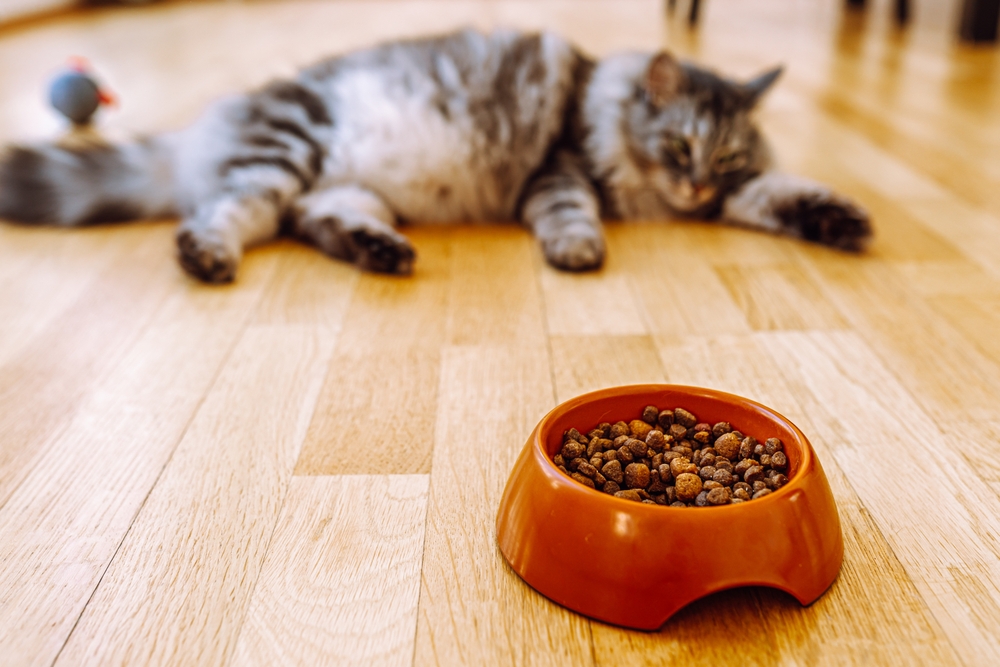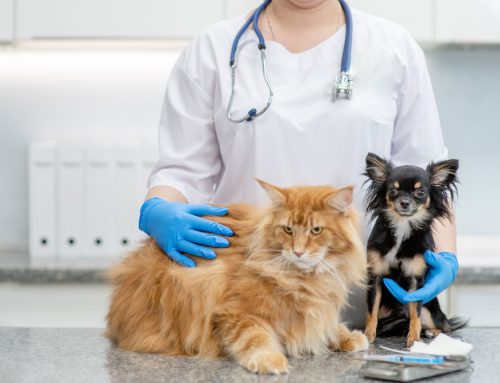When their furry pal falls ill or becomes injured, owners often panic and rush to their nearest veterinarian. Not all illnesses or injuries require emergency care, however, although a pet who is exhibiting worrisome signs should certainly be seen at our Sixes Animal Hospital at Bridgemill sooner rather than later. If you are conflicted over whether your pet needs immediate veterinary attention, do not hesitate to contact our team for over-the-phone triage service. We can advise you on whether your pet needs urgent care, or whether you can monitor their condition at home.
While you know a sniffle or sneeze is likely no cause for concern, here are 10 signs that indicate your pet needs emergency veterinary care.
#1: Your pet’s appetite has waned
Your pet may be a picky eater, but if they refuse all their food—including special treats—that typically signals an underlying problem. Pets can lose their appetite for a variety of reasons, such as pain, nausea, or simply feeling generally unwell. You may be able to coax your pet to eat by feeding them a bland diet for a few days to allow their gastrointestinal tract to settle, and then reintroducing their regular diet. However, if your pet is also showing other illness signs, do not wait to seek veterinary care.
#2: Your pet is struggling to urinate or defecate
Straining to urinate or defecate indicates a much larger issue that can rapidly become life-threatening. For example, if your male cat is struggling to urinate, with no result, they need emergency veterinary treatment, because they likely have a life-threatening urethral obstruction. A puppy who cannot defecate may have eaten a foreign object (e.g., a sock) that has blocked their intestine and requires emergency surgical removal. Additionally, pets who have blood in their stool or urine need veterinary care.
#3: Your pet is bleeding
A minor skin abrasion typically won’t require immediate treatment, but a major laceration needs repairing quickly to avoid infection. Bleeding from any orifice (e.g., mouth, nose, rectum) is cause for concern and can indicate serious internal bleeding.
#4: Your pet is limping or seems painful
Pets rarely show weakness or illness signs, so by the time they display an obvious limp or pain, the condition is often serious. Some diseases, like Lyme disease, can cause lameness that waxes and wanes or shifts legs. Other conditions, like a ruptured cranial cruciate ligament, can cause lameness that doesn’t appear particularly painful. Regardless, a pet who is limping or obviously in pain, such as hunching their back, yelping, or whining, should be seen by a veterinarian immediately.
#5: Your pet has a bloated abdomen
Bloat in pets can be a life-threatening emergency, particularly if the stomach flips over on itself, cutting off circulation. Pets who have a distended abdomen or are trying to vomit, but cannot do so, may have bloat or gastric dilatation volvulus (GDV), which can quickly lead to death. If your pet is struggling to vomit or their abdomen appears bloated, they need urgent veterinary care.
#6: Your pet has vomited more than twice in 24 hours
Pets who vomit occasionally are no cause for concern, but if their vomiting continues more than twice in 24 hours, their vomit is bloody, or they show other illness signs, such as diarrhea, lethargy, or a fever, they need to be seen by a veterinarian.
#7: Your pet has had diarrhea for more than 24 hours
Diarrhea is no fun, for you or your pet, but an episode or two of loose stool is generally fine, unless accompanied by another illness. However, If your pet’s diarrhea does not begin to resolve after 24 hours, or is bloody, you should seek veterinary care.
#8: Your pet is having seizures
Seizures are always cause for concern, whether your pet is seizing for the first time, or has been diagnosed with epilepsy. If your pet has several seizures close together, their body temperature can rise to life-threatening levels, so your pet needs attention to stop the seizures as quickly as possible. With a first seizure, your pet may be seizing because of an underlying condition that needs prompt treatment. Regardless, you should always get veterinary advice when your pet is having a seizure.
#9: Your pet is having difficulty breathing
If your pet is struggling to breathe, do not wait for the problem to resolve on its own. Pets who are breathing heavily while resting may also cough excessively, or display bluish-purple gums and tongue. Breathing difficulties can quickly become life-threatening, so never delay getting veterinary help for your pet who is struggling to breathe.
#10: Your pet came in contact with a toxin

Toxin exposure causes numerous issues—and some can be deadly. From toxic foods and trash can contents, to cleaning chemicals and lawn care products, your pet can be exposed to many toxic items in your home that can cause gastrointestinal issues, neurological problems, or death.
“Is my pet sick enough that they need emergency veterinary care?” Concerned pet owners often ask this question, which can be difficult to answer. However, we hope this information helps. Rest assured you can contact our Sixes Animal Hospital at Bridgemill team anytime for advice on your pet’s condition and whether they need to head to our hospital as quickly as possible.






Leave A Comment